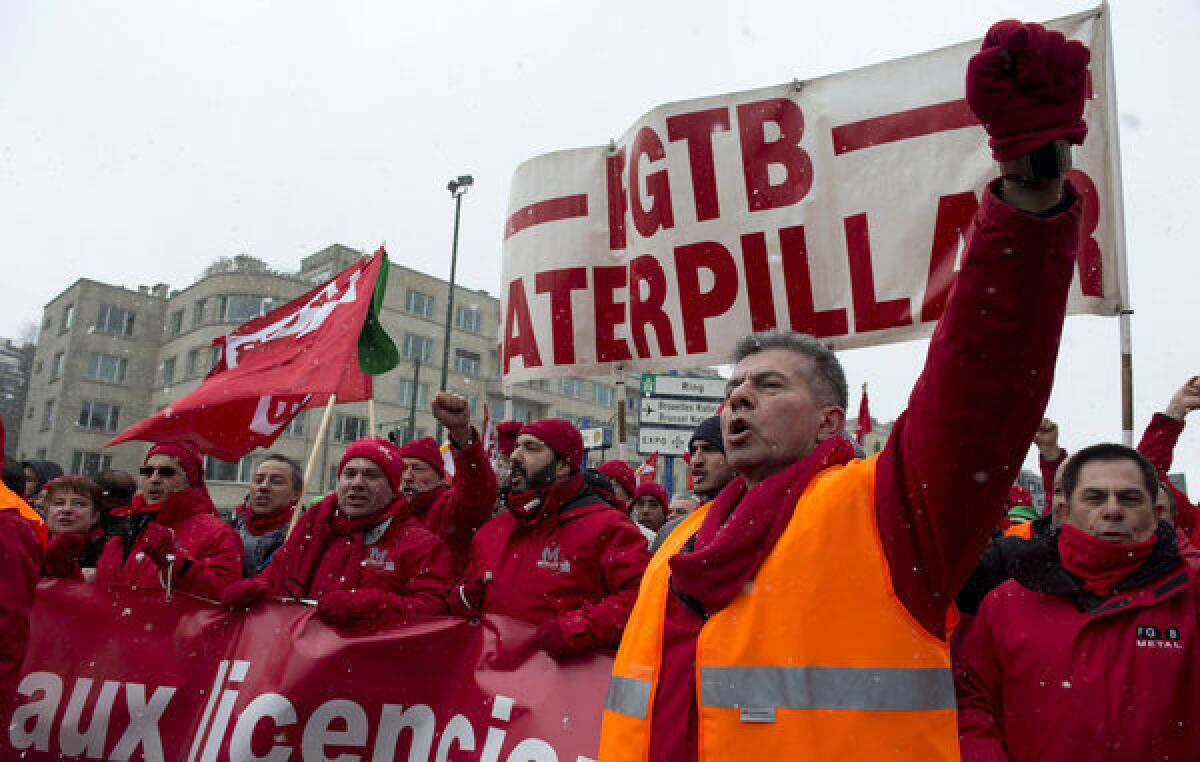Jobless rate hits new record in Eurozone

- Share via
LONDON -- Joblessness in the 17-nation Eurozone hit a record high in January and February, according to statistics released Tuesday that gave a grim snapshot of the region’s continued economic malaise.
The unemployment rate rose to 12% in the first two months of the year, the highest level since the euro was introduced more than a decade ago. That translates to about 19 million people who were out of work in February, 1.8 million more compared with the same time last year.
But the average masks wide disparities among the 17 countries that share the euro currency. As has been the case throughout the continent’s debt crisis, the misery is of far greater magnitude in southern Europe.
In Greece and Spain, which were forced to seek emergency funding from international lenders, the jobless rate exceeds 26%. More than half of people younger than 25 in both countries are idle. By contrast, youth unemployment in powerhouse Germany stood at just 7.7% in February.
Germany and Austria posted the most enviable figures, with overall unemployment of 5.4% and 4.8%, respectively, in February. Another small bright spot appeared in Ireland, the only one of the five countries that have applied for bailouts to see a drop in the jobless rate, to 14.2% from 15.1% a year ago.
The figures were compiled before the latest shock to hit the Eurozone: the controversial bailout of Cyprus, where major account holders at the two biggest banks will see their deposits docked to help shore up the island’s financial system. With Cyprus’ financial sector – the main engine of its economy – set to shrink drastically, officials are bracing for a huge loss of jobs that will further worsen the employment picture in the Eurozone.
The Cypriot crisis erupted during a period of relative calm in the 3-1/2-year-old euro crisis. Fears of imminent financial ruin for Italy and Spain, the third- and fourth-largest economies of the Eurozone, have receded as borrowing costs for those governments have fallen back below the danger level and European stocks have climbed in value.
But the Eurozone as a whole remains mired in a damaging recession. Analysts see little prospect of a return to growth this year in key countries such as Italy.
In the wider European Union, which comprises 27 countries, the unemployment rate was 10.9% in February, up from 10.2% the year before.
ALSO:
March bloodiest month so far in Syria uprising
Cypriot Finance Minister Michalis Sarris resigns
North Korea analyst: ‘One of the most dangerous moments’
More to Read
Sign up for Essential California
The most important California stories and recommendations in your inbox every morning.
You may occasionally receive promotional content from the Los Angeles Times.











